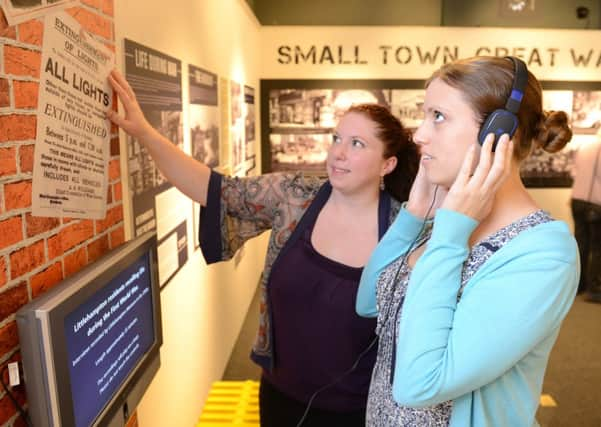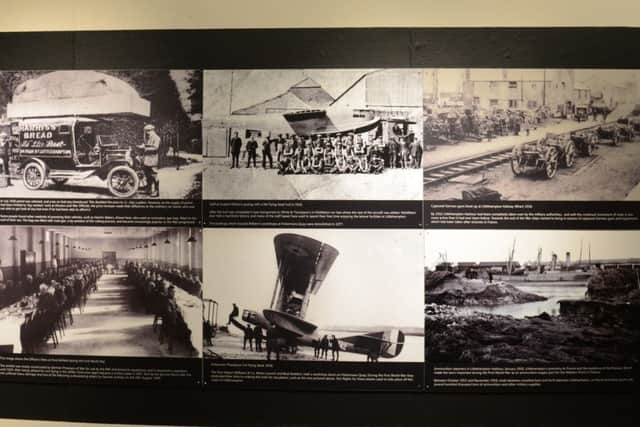Littlehampton display brings home the realities of war


Sgt Gray used his time off from the fighting for the altogether gentler pursuit of writing beautifully illustrated stories about the adventures of birds and animals, and particularly bunny rabbits Marmaduke and Bunty.
One passage reads: “Bunty and Marmaduke were awake early next morning and they hurried downstairs to have a look at the house.
Advertisement
Hide AdAdvertisement
Hide Ad“They were so pleased to be home again and then found their Daddy had made the pushchair into a little motor car for them.”


At the end, Sgt Gray adds: “I shall be home to see you now, and then I will tell you the rest of the story.”
His letters home and the intricate illustrations, in a similar style to Beatrix Potter, are among the many poignant items in Small Town in a Great War, Littlehampton Museum’s special exhibition marking the centenary of the outbreak of the First World War.
Opened on last week, it tells the stories both of those who fought in the trenches of France and Belgium and the impact the war had on everyday life in the town itself.
Advertisement
Hide AdAdvertisement
Hide AdCouncillor Malcolm Belchamber, chairman of the town council’s community resources committee, said the artefacts on display, such as Sgt Gray’s letters, highlighted the human side of the war.
“These are real people, who are obviously suffering away from their family,” he said. “In those days, people just didn’t leave their home town, but suddenly they found themselves going off to fight a war far away from home.”
Thankfully, Sgt Gray did make it home to resume his life in peacetime Littlehampton, but the war claimed the lives of 236 men from the town, more than one in five of the men who went off to fight.
Pte Joseph Jackson was one of the younger casualties. He enlisted with the machine gun company of the Royal Sussex Regiment at the age of 19 on September 14, 1914, just weeks after war was declared on Germany and was killed in action on June 11, 1917, in Belgium. He is commemorated on the vast Menin Gate monument at Ypres.
Advertisement
Hide AdAdvertisement
Hide AdOne of his friends wrote to Joseph’s widowed mother at home in Central Gardens, Littlehampton, after his death, saying: “Your son was a great favourite with the Lewis gun team and the boys and myself miss him very much. He was as brave and cool a man as I ever met and he feared nothing.”
Interviews with Littlehampton residents recalling the war years, recorded by museum staff in the 1980s, can be listened to once more.
Fittingly, the exhibition continues until November 11.
For the full story, see the Gazette, issue October 2, 2014.